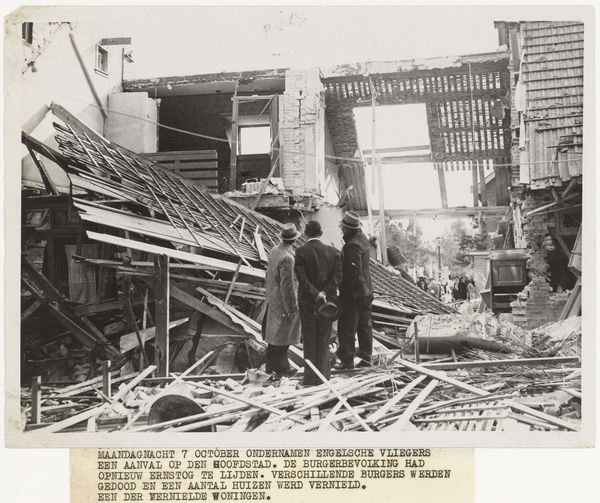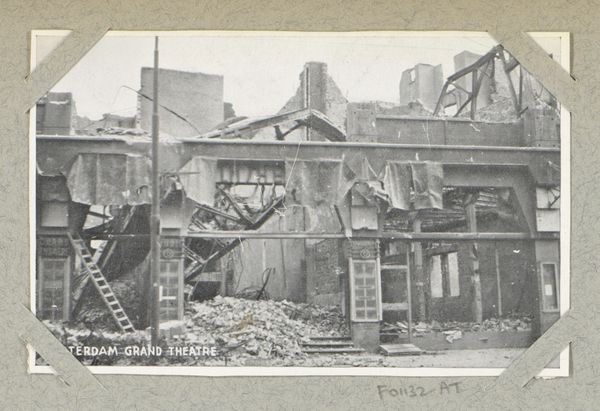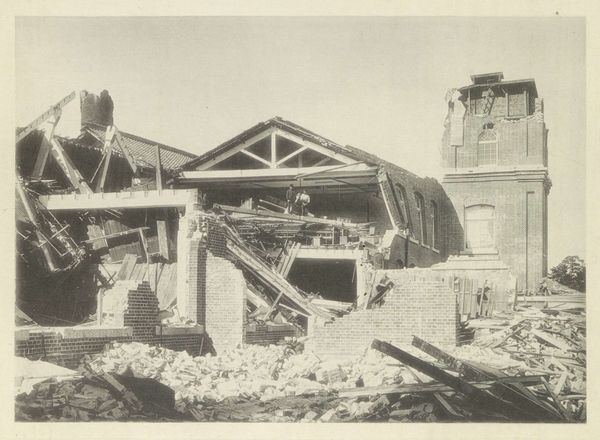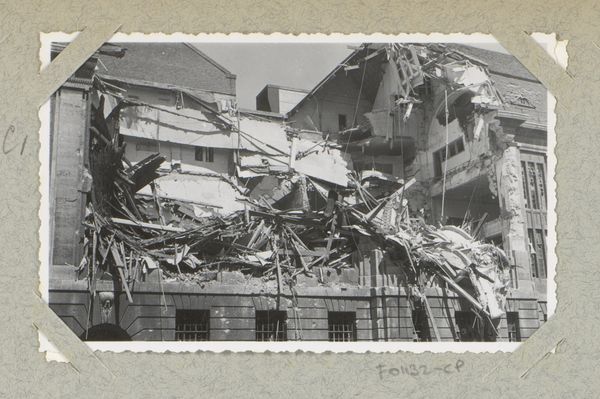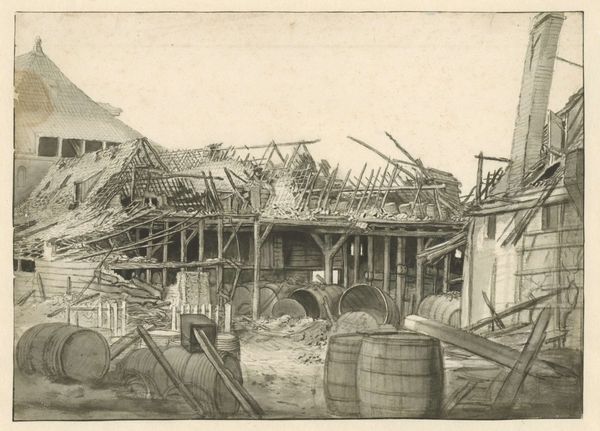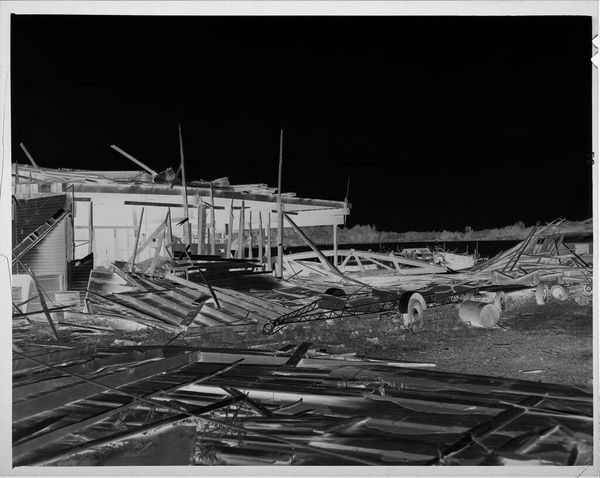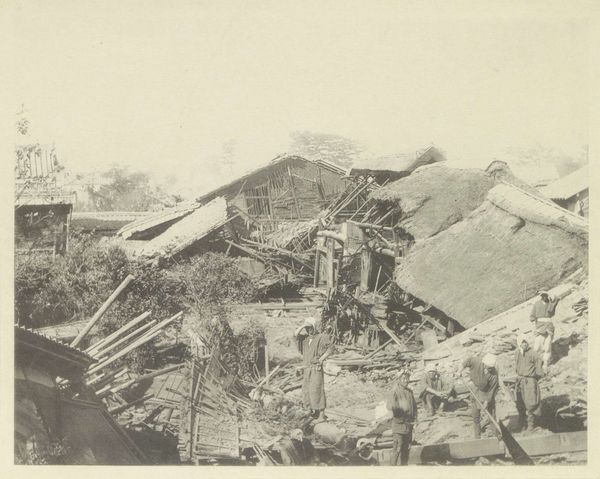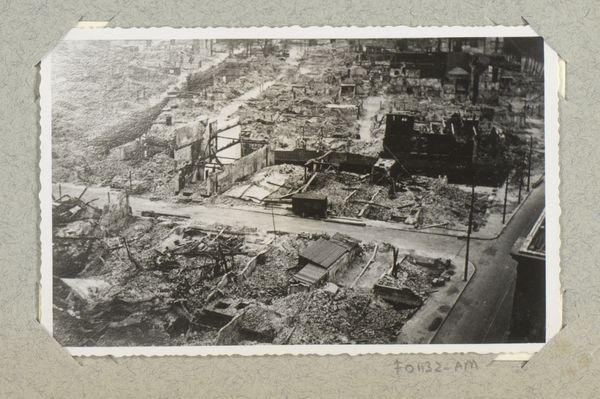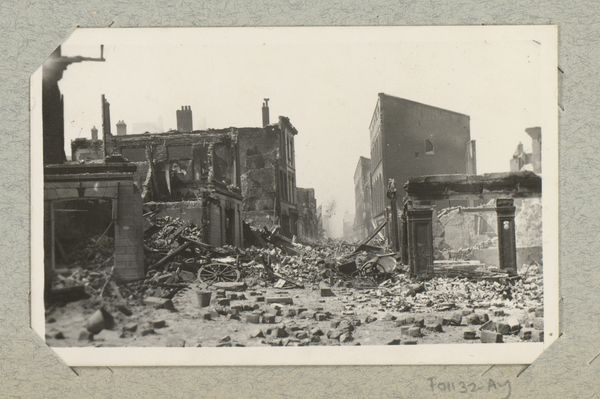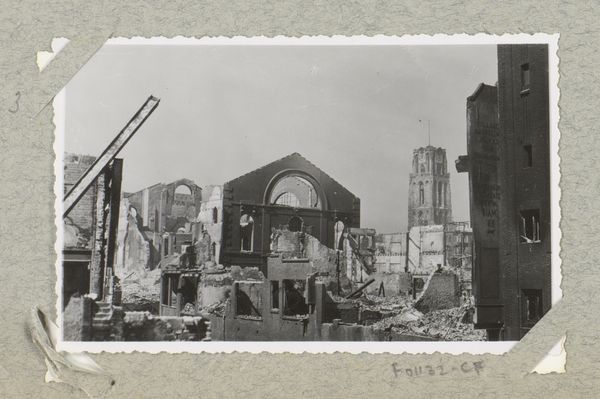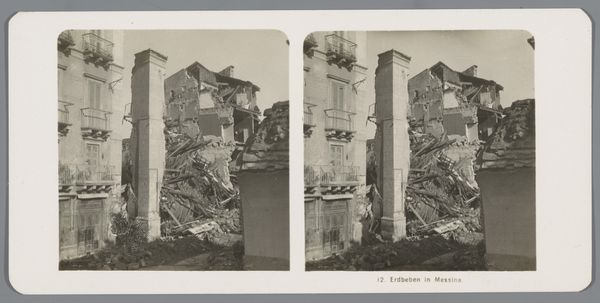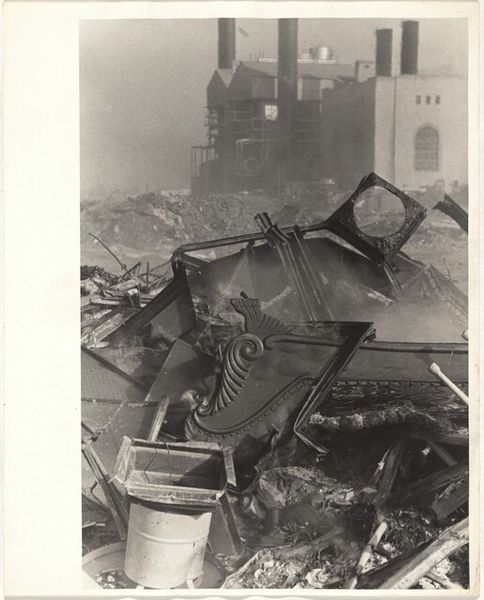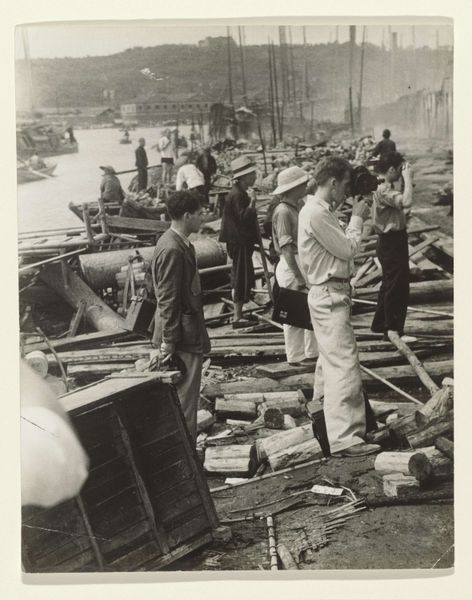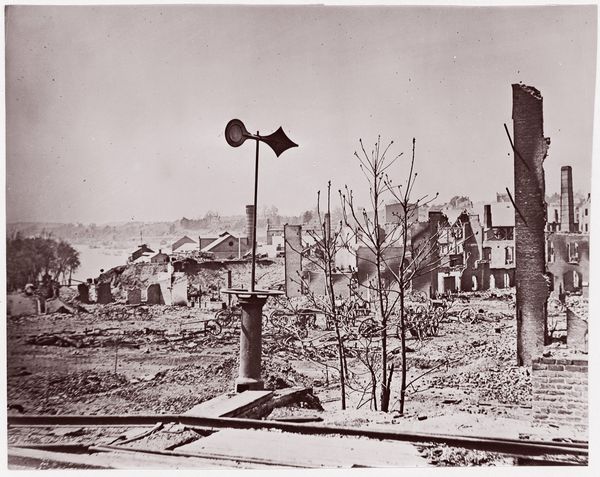
Copyright: Rijks Museum: Open Domain
Editor: This gelatin-silver print, titled "Huizen getroffen door Engelse bommen" and dated 1940, depicts the aftermath of a bombing. The scene is chaotic, full of rubble and debris, and yet, there are figures actively working to clear the space. What strikes me is the stark contrast between the destroyed home and these figures trying to impose order. How do you interpret this work? Curator: What I see here is a complex visual statement deeply embedded in the sociopolitical realities of wartime. The photograph's origin as a gelatin-silver print carries specific connotations, linking it to both the documentary power of photography and the propaganda mechanisms operating at the time. This image speaks to me of trauma and resilience, yes, but more profoundly of the manipulation of truth during wartime. Editor: Manipulation of truth? Curator: Yes, consider the circumstances in which it was created. The text accompanying the image – visible even in the print itself – states its release was authorized by German authorities. We need to question how this imagery was deployed to shape public perception. Who are the subjects in this photograph, and what do their activities signify within the broader narrative of occupation and resistance? Is this photo evidence of English cruelty, or is it about creating sympathy, and thus tacit approval of something else? Editor: I didn't even consider that the figures could be forced into that labor. I was viewing them as heroic figures cleaning up. Curator: That's the power of visual propaganda. Even decades later, it prompts reflection. How do we engage with images critically, acknowledging the power dynamics at play in their production and dissemination? Editor: It’s interesting how much context shapes one's understanding. Looking at it now, with your points in mind, I'm much more aware of its potential as a tool of persuasion rather than a straightforward document of war. Curator: Exactly, and in that realization, we begin to see how historical narratives are often constructed through selective framing and strategic omissions, influencing collective memory and shaping our understanding of conflict. We’ve gone beyond seeing it just as a photograph to seeing the socio-political forces in play.
Comments
No comments
Be the first to comment and join the conversation on the ultimate creative platform.
